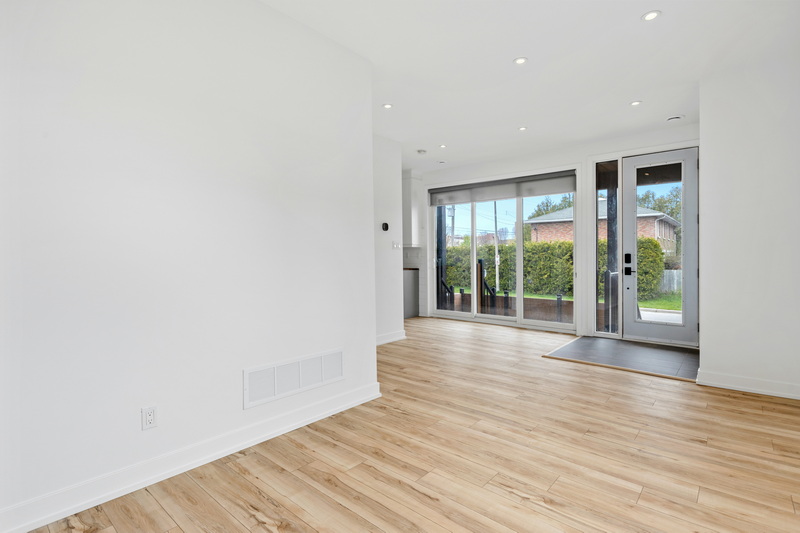English 




Views: 222 Author: Astin Publish Time: 2025-01-05 Origin: Site



Content Menu
>> Attaching the Door to the Frame
>> Installing Glass (if applicable)
● Final Adjustments and Sealing
● FAQ
>> 1. How long does it typically take to install an aluminum storefront door?
>> 2. Can I install an aluminum storefront door myself, or should I hire a professional?
>> 3. How often should aluminum storefront doors be maintained?
>> 4. What are the most common issues with aluminum storefront door installations?
>> 5. How can I ensure my aluminum storefront door is energy efficient?
Aluminum storefront doors are a popular choice for commercial buildings due to their durability, aesthetic appeal, and energy efficiency. Installing these doors correctly is crucial for ensuring proper functionality, security, and longevity. This comprehensive guide will walk you through the process of installing aluminum storefront doors, from preparation to final adjustments.

Before beginning the installation process, gather the following tools and materials:
- Power drill
- Level
- Tape measure
- Phillips head screwdriver
- Flathead screwdriver
- Hammer
- Chisel
- Safety glasses
- Gloves
- Mineral wool insulating material
- Silicone caulking
- Screws (¼" x 3" / 4" zinc-coated flat head sheet metal screws / concrete screws)
- Allen wrench set
- Rubber mallet
- C-clamps
- Knife
Accurate measurements are crucial for a proper fit. Follow these steps:
1. Measure the width and height of the opening using a tape measure.
2. Take measurements from both the inside and outside of the frame for accuracy.
3. Ensure your door and frame will fit inside the opening, allowing for a 1/2" gap in width and 1/4" gap in height.
1. Remove all packing materials from the door frame, including protective plastic.
2. Assemble the frame components: lock stile, hinge stile, and head.
3. Attach the head component to the hinge or lock stile using the frame brackets.
1. Position the frame in the opening, ensuring it's level. Use shims to adjust as necessary.
2. Secure the frame to the wall using screws, making sure to screw into the framing and not just drywall or plaster.
3. Double-check that the frame is level and square, adjusting if needed.
1. If using intermediate pivots, retract the pivot pin to allow the door pivot to clear.
2. Set the door onto the bottom pivot and push the top pivot pin into the retracted position.
3. Locate the top door pivot under the frame and release the pin.
4. Adjust the door clearance by rotating the pivot pin clockwise to lower the door or counterclockwise to raise it.
5. Aim for a 1/8" clearance between the top rail of the door and the frame.
1. Ensure the door leaf is square and securely blocked or clamped.
2. Install interior glass stops with verticals running through the installed glazing gasket.
3. Place glass setting blocks at the bottom rail to support the glass unit.
4. Position the glass unit in the door leaf, pressing it firmly against interior glazing gaskets and stops.
5. Block the glass unit all around to maintain consistent spacing (usually 3/16").
6. Install exterior glass stops with horizontals running through the installed glazing gasket.

1. Locate the door handle package and identify the outside handle (without Allen key marks).
2. Insert the pins through the outside handle and thread them into the door.
3. Evenly tighten the pins to secure the handle.
4. Attach the inside handle, aligning it with the outside handle.
5. Tighten the Allen key screws to secure the inside handle.
1. Install the closer according to the manufacturer's instructions.
2. For overhead concealed closers, ensure proper alignment with the door and frame.
3. Adjust the closer for smooth operation and proper closing speed.
1. Check the alignment of the door by examining gaps between the door and frame.
2. Use adjusting screws on hinges or closing mechanisms to fine-tune the door's position.
3. Ensure even gaps and smooth operation.
1. Clean all surfaces to be sealed with isopropyl alcohol.
2. Apply a primary bead of sealant to the bottom front edge of the aluminum threshold.
3. Apply a secondary bead of sealant to the floor substrate or sill flashing.
4. Inject sealant into all predrilled screw hole locations.
5. Install backer rod at the head and jambs.
6. Apply a 3/8" bead of sealant around the perimeter of the frame, both interior and exterior.
7. Tool the sealant for a smooth finish.
1. Open and close the door multiple times to ensure smooth operation.
2. Check that the lock engages properly.
3. Verify that the door closer functions correctly, allowing the door to close fully and latch securely.
4. Inspect all seals and weatherstripping for proper contact and compression.
Installing aluminum storefront doors requires attention to detail and precision. By following this comprehensive guide, you can ensure a professional installation that provides durability, security, and aesthetic appeal to your commercial space. Remember to always consult local building codes and manufacturer specifications for specific requirements. With proper installation, your aluminum storefront doors will provide years of reliable service and enhance the overall appearance of your building.

The installation time can vary depending on the complexity of the project and the installer's experience. On average, it can take anywhere from 4 to 8 hours for a standard installation. However, more complex installations or those requiring custom modifications may take longer.
While it's possible for an experienced DIYer to install an aluminum storefront door, it's generally recommended to hire a professional. Proper installation is crucial for the door's functionality, security, and energy efficiency. Professionals have the necessary tools, experience, and knowledge of building codes to ensure a correct installation.
Regular maintenance is essential for the longevity and proper function of aluminum storefront doors. It's recommended to perform basic maintenance, such as cleaning and lubricating moving parts, every 3-6 months. A more thorough inspection and maintenance should be done annually, including checking for wear and tear, adjusting hardware, and resealing if necessary.
Common issues include:
- Improper alignment leading to gaps or difficulty closing
- Inadequate sealing causing air or water leaks
- Incorrect installation of hardware resulting in operational problems
- Poor glass installation leading to rattling or potential breakage
- Failure to account for building settling or thermal expansion
To maximize energy efficiency:
- Choose doors with thermal breaks to reduce heat transfer
- Opt for low-E or insulated glass options
- Ensure proper weatherstripping and sealing during installation
- Consider adding a door sweep to the bottom of the door
- Regularly maintain and adjust the door to prevent air leaks
[1] https://www.autodoorandhardware.com/Step-by-Step-Guide-for-Installing-Standard-Storefront-Doors-s/123325.htm
[2] https://sweets.construction.com/swts_content_files/100336/508293.pdf
[3] https://www.doorclosersusa.com/v/vspfiles/assets/images/How%20Do%20You%20Install%20A%20Storefront%20Door%20Component%20Breakdown%20Figure%201.jpg?sa=X&ved=2ahUKEwi53t_Fit6KAxWMkIkEHQABCY0Q_B16BAgCEAI
[4] https://www.youtube.com/watch?v=fwbQSfr1-Ew
[5] https://fhc-usa.com/media/bss/productattachment/FHC-Framed-Storefront-Entrance-Doors-Installation-Instructions.pdf
[6] https://esnaglass.com/aluminum-storefront/aluminum-storefront-installation/
[7] https://www.efcocorp.com/images/products/remote/instructions/Y001%20-%20Storefront.pdf
[8] https://www.usalum.com/techdocs/PDF/Door_Installation_Basics_Poster.pdf
[9] https://www.doorclosersusa.com/v/vspfiles/assets/images/How%20Do%20You%20Install%20A%20Storefront%20Door%20Component%20Breakdown%20Figure%201.jpg?sa=X&ved=2ahUKEwjTo-nFit6KAxVzFlkFHcJzJUAQ_B16BAgEEAI
Top Aluminum Furnitures Manufacturers and Suppliers in Czech Republic
Top Aluminum Furnitures Manufacturers and Suppliers in Poland
Top Aluminum Furnitures Manufacturers and Suppliers in Belgium
Top Aluminum Furnitures Manufacturers and Suppliers in Finland
Top Aluminum Furnitures Manufacturers and Suppliers in Denmark
Top Aluminum Furnitures Manufacturers and Suppliers in Greece
Top Aluminum Furnitures Manufacturers and Suppliers in Portugal
Top Aluminum Furnitures Manufacturers and Suppliers in Austria
Top Aluminum Furnitures Manufacturers and Suppliers in Norway
Top Aluminum Furnitures Manufacturers and Suppliers in Sweden
